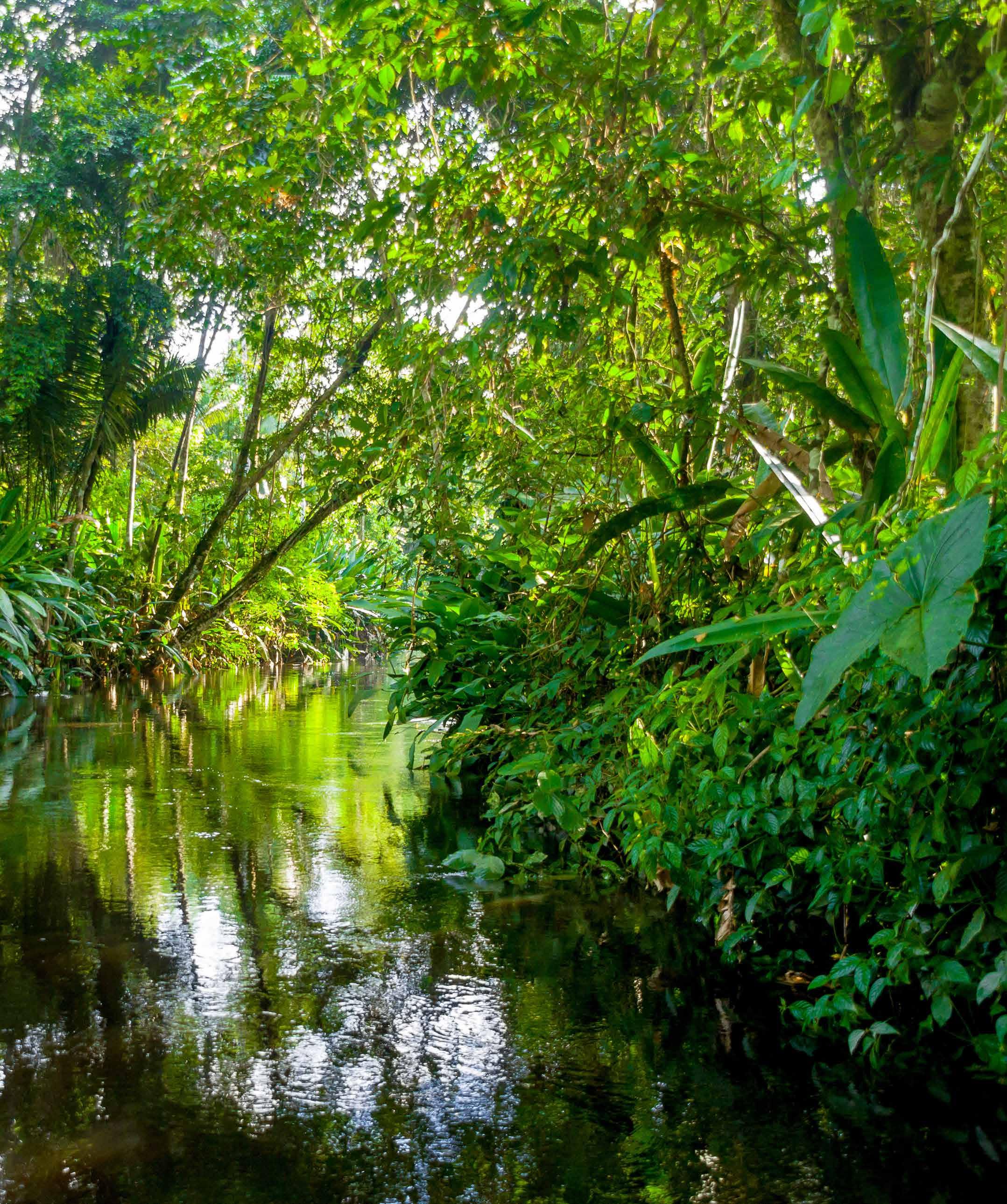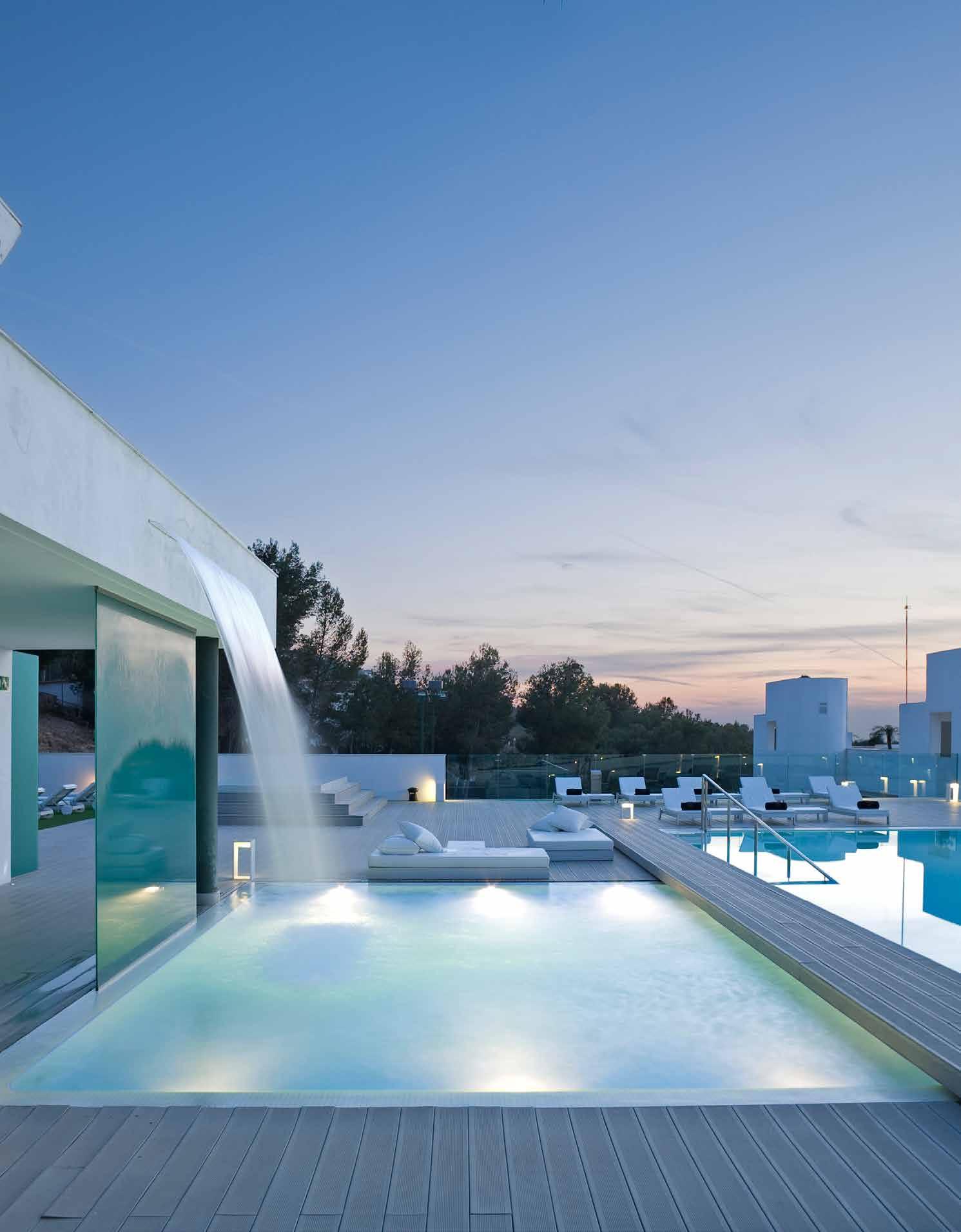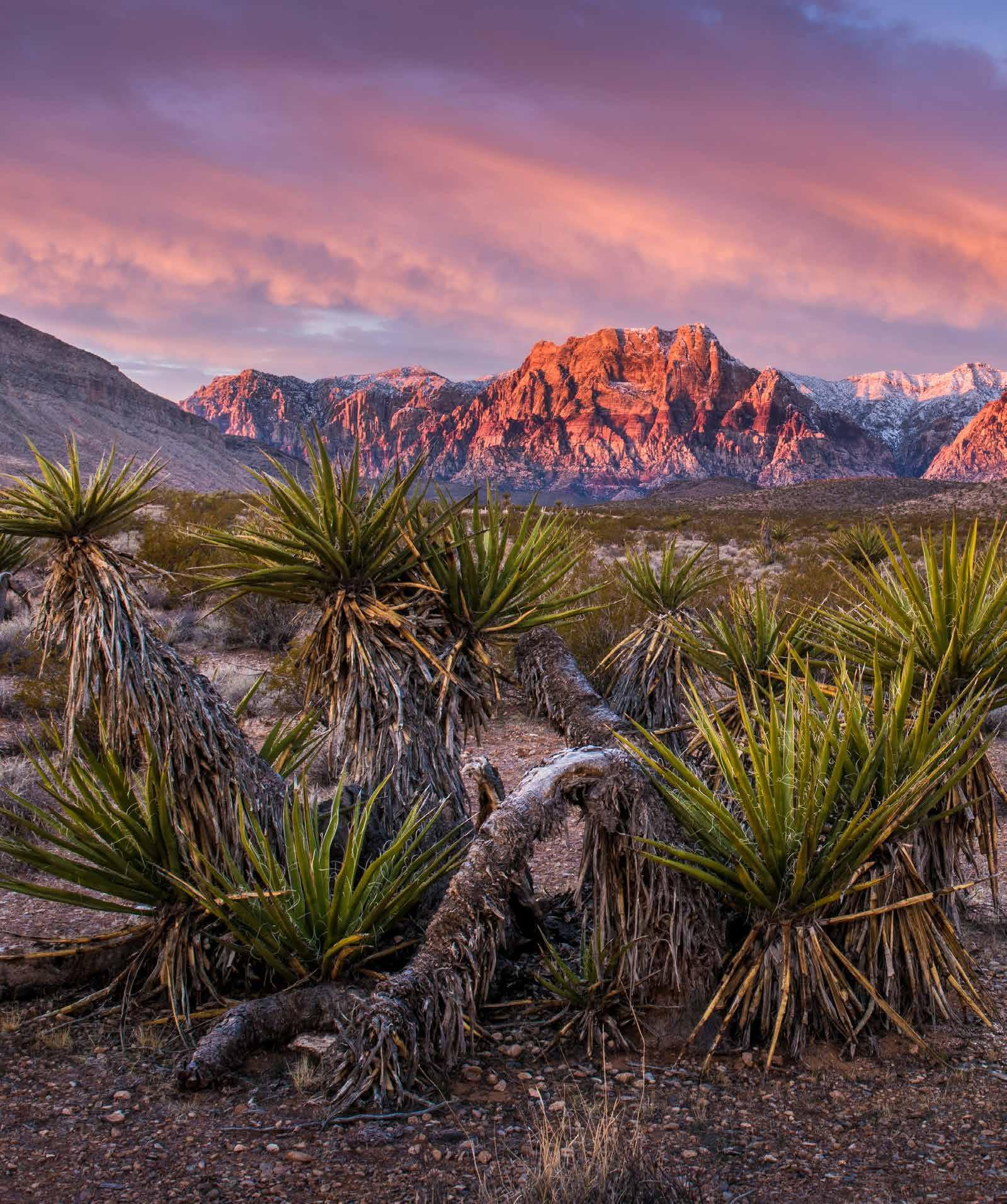
15 minute read
Sparkling company Hatt et Söner champagne invites Tempus to discover a unique personal vintage
SPARKLING COMPANY

Kristofer Ruscon, founder of Hatt et Söner, explains the story behind his exclusive champagne house’s remarkable history and invitation-only personal vintages
It was during the 1940s, in the French Alpine town of Annecy, that Joseph Ruscon made his vow to never pass a day of his life without drinking a bottle of wine. A seemingly strange pledge from a former beermaker, it was inspired by the three years he spent hiding in a wine cellar during the Nazi occupation of France, alongside the Jewish people he was sheltering from discovery.
Years after the war, Joseph kept this promise, discovering his favourite vintages in a niche champagne created by the Vallois family. He would order 1,000 bottles a year to share with his family, and forge such a close connection that his grandson, Kristofer Ruscon, would grow up knowing winemaker François Vallois like a “second father”. In 2006, feeling mounting pressure from the competition of the big champagne houses, Vallois decided to sell the vineyard and Kristofer, then aged just 21, stepped up.
“I’ve been naïve my whole life, but it’s actually been very good for me. I hope I never lose that quality, actually,” Kristofer says, explaining how he presented Vallois with a handwritten contract to buy the champagne house. “I actually talked to my grandfather about it, and he told me I was young and stupid – and he was so right. He said, ‘You have no idea how difficult it’s going to be’ It has been a struggle, but we have survived and I’m so happy, especially as a small champagne house. I’m fighting hard to show how small champagne houses can survive – especially since, today, the biggest group controls more than 30 per cent of the region.”
Kristofer named his newly acquired winery Hatt et Söner – blending his French father’s family legacy of hat-making with his Swedish mother’s language – and set about taking it from a small house to one of the most unique and sought-after champagne concepts in the world. »
OUR PERSONAL VINTAGE IS ABOUT BEING PART OF THIS WORLD, AND A PART OF SOMETHING BIGGER



This page: The vineyards of Hatt et Söner. Left: founder Kristofer Ruscon (top) and barrels of champagne
“What we have created is the world’s first ever champagne for private clients,” Kristofer says. “I remember when I first explained the idea to François, asked if he thought we could do it and he said ‘never’.
“Our clients create a personal vintage, starting with choosing between the top four of the winery’s 55 vineyards, which is over 4.2 hectares (11.4 acres) of vine, which vinification method they prefer, if they want steel tank or oak barrel. We give our clients their own space in our cellar and then let them choose the maturation level, the sugar level, everything. It has become something far more than just choosing a vintage – it’s about creating individual wines for unique clients, but always to the highest quality.
“For me, one of the true joys of winemaking is following the wine’s maturity – every vintage is so different – but that’s only been something that winemakers themselves have had access to before. I wanted to give that opportunity to people, let them see what champagne is really about.”
Such is the rarity of Hatt et Söner’s publicly available wine that London’s connoisseurs can only find it in private members’ club 67 Pall Mall. And while the brand does supply certain events to introduce new prospective clients, its main focus is on supporting charities. Hatt et Söner has collaborated with charitable organisations such as the Elton John AIDS Foundation, Unicef and amfAR.
“We work with individuals to create a champagne that is totally bespoke to them. We really connect with our clients on a very human level, and so it seemed like a natural move for who we are as a brand – as well as an act of rebellion against our investors,” he laughs. “We defined what our personal vintage is about, and it’s about being a part of this world, being part of something bigger. We decided to give 10% of
Watch our exclusive interview with Kristofer Ruscon at tempusmagazine.co.uk


our revenue to charity, and it’s been amazing.”
Now, Kristofer has launched the Hatt et Söner members’ club in Champagne – the first ever private members club in the illustrious region. “We’re a genuine members’ club, with a clubhouse and everything. But of course it’s all about connecting to the wine. We invite our clients down for the harvest, where they can enjoy learning about the process and connect with each other – but in creating the right ambiance, with the right people, we also help our clients make connections with each other as well.”
While Hatt et Söner’s expansion plans are being kept firmly under the hat, Kristofer is excited to share the brand’s move into the art world, particularly his collaboration with Stockholm-based German artist Carsten Höller. Best known for his quirky Tate Modern project Test Site (which saw him install slides in the London gallery’s Turbine Hall), Höller and Kristofer plan to test how touch and light affect wine.
“The project we’re doing in the Art Field is very, very cool. It’s not like some artist collaborating on a bottle label – this is a true art project that will tell us more about our wine in an intriguing, edgy way,” he says.
Kristofer’s passion for champagne goes far beyond just the smell and taste of the wine itself. In fact, just days after his grandfather Joseph died, Kristofer opened a bottle of Hatt et Söner’s Le Grand-Père Dignitas – originally created as an homage to Joseph.
“What you taste is just as much about how connected you are to yourself as it is the ingredients, and that’s what I really love about champagne. It is so diverse. And where you are, how you feel, can create totally different experiences,” he says. “My grandfather was such an important part of this house, he made everything possible. Without him we wouldn’t have our personality.
“He was a very strong character, very trusted but imposing. Everyone loved him, but people were often afraid of him. He was the head of the family, always bringing everyone together and driving us in the right direction. He was a great man,” Kristofer says. “And, you know, just before he passed away, he asked for wine. It is our greatest passion.”


Hatt et Söner offers unique personal vintages of champagne. Far left: winemaker François Vallois
The changing face ofwealth

Move over status-driven, profit-chasing Baby Boomers, gen X and Y are not only giving the planet priority but also changing how society perceives wealth and measures success. From Leonardo to Greta, we examine the real influencers behind the new UHNW, and the behaviour trends that will affect us all
Words: Lysanne Currie

This is Leonardo DiCaprio. You know him from Titanic, The Wolf of Wall Street, and this year’s triumphant Once Upon a Time in Hollywood. His 30-year résumé of award-winning performances and box office smashes have earned him an Oscar, a Bafta, two Golden Globes and a swag of nominations besides. Yes, he’s a successful actor –the sort of success that’s landed him the kind of financial reward mere mortals can only dream about. So DiCaprio owns a 104-acre island in Belize, as well as a $100,000 car which he can park in the driveway of any one of his three homes – situated in Los Angeles, New York or Palm Springs – or his various California beachside pads.
At 44, he is something of a poster boy for the generation X super-rich. Frankly, who else could have played Jay Gatsby with such effortless excess and convincing charm in Baz Luhrmann’s 2013 blockbuster?
But for all this charismatic actor’s physical wealth, he constantly counterbalances it with an eco-friendly ethos. His Belizean island, Blackadore Caye? Well, he wants to turn it into an eco-resort entirely powered by renewable energy that may open as early as next year. Likewise, that $100,000 car? An environmentally friendly Fisker Karma hybrid, the first electric sports car to use lithium battery cells. And all those homes? Powered by solar panels – his $10m NYC pad also pumps out twice-filtered aromatherapy air and incorporates reflexology flooring.
His record of environmental activism and acts of philanthropy have shamed politicians. Far from just offering pledges and good intentions, DiCaprio deals with a problem as he sees it. Not only has he donated his own funds to worthy causes, but his climate crisis-tackling Leonardo DiCaprio Foundation (LDF) works in more than 50 countries around the world. Through his eponymous foundation, he has awarded $15.6m to organisations actively protecting wildlife, ecological systems and the rights of Native Americans, and has made two online documentaries about climate change. He previously sat on the board of the World Wildlife Fund, donated $35,000 for an eponymous computer centre at Los Angeles public library, and gave $1m to the US-based Wildlife Conservation Society at Russia’s Global Tiger Summit in 2010.
He uses his considerable fame as a platform to raise awareness at every opportunity.
“To be able to talk about climate change on a platform that hundreds of millions of people are watching… to say this is the most existential crisis our civilisation has ever known,“ DiCaprio said while accepting his 2016 best actor Academy Award for The Revenant. “The time is now. It’s imperative we act.
“I feel there is a ticking clock, there is a sense of urgency that we all must do something pro-active about this issue.“ While the climate crisis is evidently DiCaprio’s foremost concern, he has also been active combining work and philanthropy for other causes. He worked with Mozambican orphans while filming »
Clockwise from right: Leonardo DiCaprio won a swag of awards for The Revenant; His Fisker Karma car; Ethical investment benefits the future of the planet



Right: Lush Amazon rainforest in Yasuni, Ecuador
Blood Diamond, donated $1m to the Haiti earthquake relief and the Hurricane Harvey fund, donated $61,000 to an organisation furthering LGBT+ rights. He’s also been vocal in his support for the Standing Rock tribe’s opposition to the Dakota Access Pipeline, has travelled to Indonesia to criticise the government’s palm oil industry. He organised a 2013 art auction which raised $40m for his foundation – the highest-grossing environmental charity ever – and, most recently, he made headlines after pledging $5m to an emergency Amazon Forest Fund. Oh, and he’s vegetarian.
“Clean air, water, and a liveable climate are inalienable human rights,” he explains on the LDF website. “And solving this crisis is not a question of politics, it is a question of our own survival.”
With his big-screen appeal and desire to do good with the wealth it has brought him, DiCaprio is one in a million. Actually, statistically speaking, as an ultra-high net worth individual (UHNWI), he’s one of just 0.003% of the world’s total population with assets of at least $30m – a group that holds around 13% of the world’s total wealth. But, like DiCaprio, this group is not only putting its considerable influence to practical use, but also inspiring millennial UHNWIs who, following in the footsteps of influential philanthropists like DiCaprio, differ from their forebears in both their decision-making style and their concern for environmental factors. There are a number of key trends that distinguish them in this.
MILLENNIAL MOVEMENT
The bridge between the youngest gen X and oldest gen Y (more commonly known as millennials) is marked by a rise of technology, but also increasingly evident environmental and economic instability. Having come of age during the 2008 global recession, younger UHNWIs have proven to be quite risk-averse compared to their predecessors – particularly when it comes to investing – while a craving for socially conscious impact and positive experience has seen this rise in philanthropic giving.
Yet, in 2017 alone, millennial donors gave £2.7bn to charity; according to a Fidelity Charitable study, 77% of wealthy, passionate and idealistic millennials and 72% of gen X donors have funnelled funds into impact investments – those aiding the environment, technology (companies including Tesla, for example) and areas such as gender diversity and affordable housing – while also generating a return. By contrast, among older generations impact investments make up just 30% of their portfolios.
Also in 2017, a Morgan Stanley survey revealed that millennials are much more apt to put their money into environmental or social investments. “Millennials are twice as likely to invest in a stock or a fund if social responsibility is part of the value-creation thesis.” Impact investing is also an area the UN General Assembly is currently looking at, as it wants to top up its sustainable investment goals via the private sector.
This trend looks set to strengthen, amid concerns about everything from socioeconomic diversity to microplastics. As Peter Cafferkey of Boncerto, which supports those looking to engage in impact investing, says: “These changes take a generation to kick in. Hopefully, we’re just seeing the start of that.”
The increasing visibility of environmental issues – due in no small part to key figures such as evergreen eco-campaigner Sir David Attenborough and 16-year-old Swedish activist Greta Thunberg – is among the factors contributing to more than £50bn of net inflows to environmental, social and governance (ESG) funds marketed to UK investors, according to Investment Week.
Funds managed with environmental considerations based »




Left to right: SHA Wellness Clinic in Alicante, DiCaprio with Once Upon a Time in Hollywood director Quentin Tarantino in the UK, Ireland and Luxembourg raked in approximately €61.1bn (£54.7bn) over 18 months to the end of June.
Explicitly ethical funds represented £20bn of the £1.3trn in total assets under management in Investment Association funds as of July – a significant increase from £16.8bn in July 2018 and the £5.9bn invested a decade ago.
But while impact investments are on the rise, financial literacy among younger generations is not. Michael K Spencer for Utopia Press says: “Millennials would rather travel and find a work-life balance that suits them… their financial literacy with regards to investing seems worrisome.” They’re also more likely to invest in cryptocurrencies than older HNWIs – with 17.9% of millennials choosing crypto before any other long-term investment option as recently as July 2018, according to a Bankrate survey.
They’re prone to spending money on experiences rather than goods – sales of cars have nosedived among this group. As financial expert Jean Chatzky told Business Insider: “When you experience something, you make memories. That allows you to go back and revisit, which brings the original burst of happiness you felt in the moment back to the fore.”
Altogether, this generation of HNWI is much more health and wellness focused. Wellness is something of a status symbol, as evinced by the rise of boutique fitness classes and luxury yoga retreats, plus the latest fads coming out Silicon Valley: nootropic drugs, conscious breathing, cryofacials and vitamin IV drips.
Then there’s the boom in wellness festivals: according to Vanity Fair, Gwyneth Paltrow’s recent Goop Summit in London saw millennials shelling out $5,700 (£4,500) on tickets, which included a $3,000 (£2,200) gift bag. Summit, meanwhile – an ultra-exclusive three-day ideas festival described as a ‘Davos for millennials’ – was referred to by The Guardian as “comparable to TED and Burning Man, featuring speakers such as Quentin Tarantino, Jane Fonda, Peter Thiel and Jeff Bezos”. Tickets costs $3,000-$8,000 (£2,200-£5,800), with events hosted everywhere from cruise ships in the Caribbean to beaches in Mexico.
As well as a focus on the body, young UNWIs also want to improve their minds, which is something a life coach can assist with. HNWIs can hire personal wellness trainers to accompany them on holiday; the likes of former Royal Marine Calum Morrison, founder of the Extraordinary Adventure Club, which offers epic journeys for mind, body and soul. Or they can seek out unique experiences via bespoke, experiential travel companies such as Black Tomato, which reconnects clients to themselves.
Whether it’s their wealth or holidays, the new generation enjoy sharing their fortune with their friends. However, as well as planning trips on yachts and parties on private islands, the move towards celebrating sustainable clothing, eco retreats and yoga poses also continues to gather pace. These are, after all, members of the Instagram generation and they wants to share their permanent values as well as their disposable belongings.
And it’s to the West Coast – to San Francisco, or Portland Oregon – they’re heading, rather than New York, for a higher standard of living. Or, indeed, a beautiful, sustainably powered island just off the Belize barrier reef…










